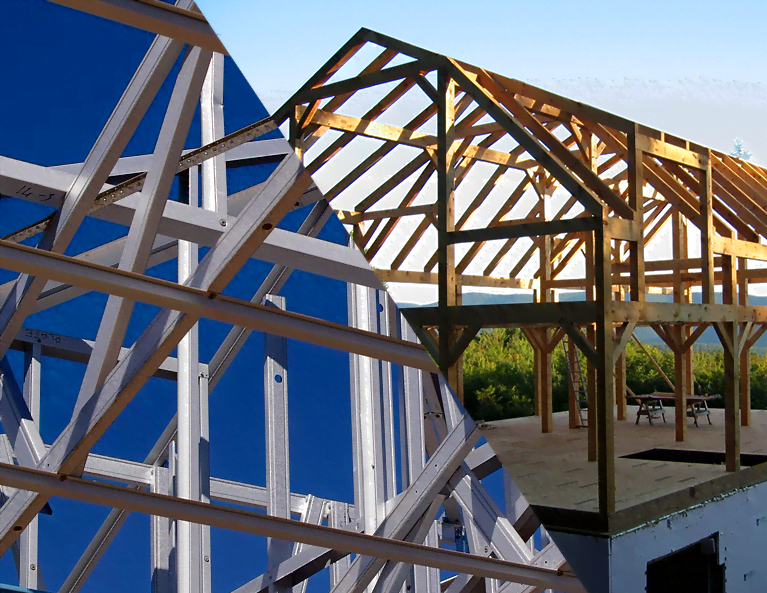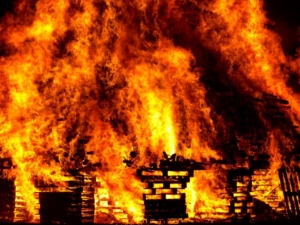Steel or Timber Frames
iBuild Can Do Both Steel or Timber Frames!
For prefabricated kit buildings, there are two kinds of framing system that is commonly used, which are Timber Framing and Steel Framing. Each framing system has its own advantages and disadvantages. Therefore, when choosing steel or timber frames, factors such as loading conditions, regional climate, humidity, fire resistance, labor expertise, material cost and availability, and sustainability should be considered.

The following paragraphs discuss these factors and provide a concise overview of Timber Framing and Steel Framing in context of a prefabricated kit building.
Structural Weight
Steel Framing is lighter than Timber Framing for structures that are built for similar load capacity. Steel Frame has higher strength-to-weight ratio than timber frame, therefore Steel Frame could be 33% to 50% lighter than the Timber Frame for same load bearing capacity.
Resistance to Termite and Rotting
Timber Framing can have termite infestation damages if not properly treated or the protection has deteriorated. Also, as timber is organic material, it can rot over time if not treated and maintained.
Conversely, Steel Framing is safe from termite damages and rotting.

Humidity
Timber may absorb moisture and expand under high humidity if not properly treated or the protection has deteriorated over time, and it can cause cracking and reduce some strength capacity.
If not properly treated or the protection has deteriorated over time, Steel also undergoes corrosion and rusting in areas of high humidity. Rusting of steel can reduce its cross-sectional area significantly and hence, reduce its strength.

Fire Resistance
Timber is combustible and could be acted as fuel in fire, and timber would also release smoke and VOCs (Volatile Organic Compound) during combustion.
Steel is not combustible. However, steel would still lose bearing capacity under extreme heat.

Humidity
Timber may absorb moisture and expand under high humidity if not properly treated or the protection has deteriorated over time, and it can cause cracking and reduce some strength capacity.
Similarly, Steel undergoes corrosion and rusting in areas of high humidity if not properly treated or the protection has deteriorated over time. Rusting of steel can reduce its cross-sectional area significantly and hence, reduce its strength.
Material and Labor Cost
For material cost, Timber Framing is generally cheaper than Steel Framing for the same structure. However, specific prices may vary from place to place.
For labor cost, labor in particular locations may have specific skill-set, therefore labor cost could also vary for Steel and Timber construction at different locations. Therefore, to accurately determine the labor cost, consultation with local builders is needed.
Sustainability
Timber Framing is more environmental friendly and more sustainable than Steel Framing. Since timber can store carbon inside when it is used as structural frames, it can reduce carbon emissions compared to steel frames.
Also, Timber has higher energy efficiency than Steel, therefore less energy is used for Timber Framing construction and usage.
Aesthetic
Timber Framing is generally thought to be more aesthetically appealing. Although most of the structural components are covered with lining, a few locations are still visible and can make a difference to the overall outlook of the building. The natural texture for timber is perfect for property decoration.
Steel Framing could be used to make more complex architectural designs owing to its moulding capability, but steel in some cases does not make up for appealing aesthetics in small residential houses.

For more information about treated Timber, click here.
Written by Wenjie Qin and Mubashir Bashir. Last updated: 29 March 2022.
